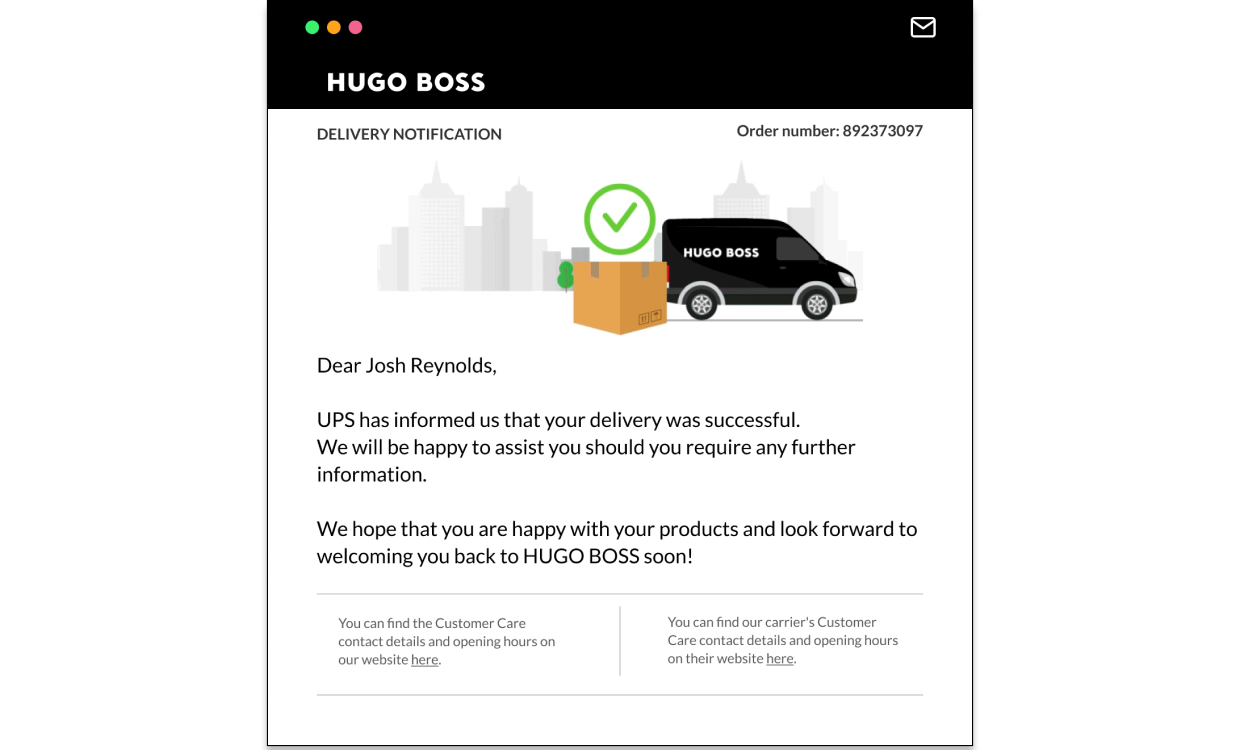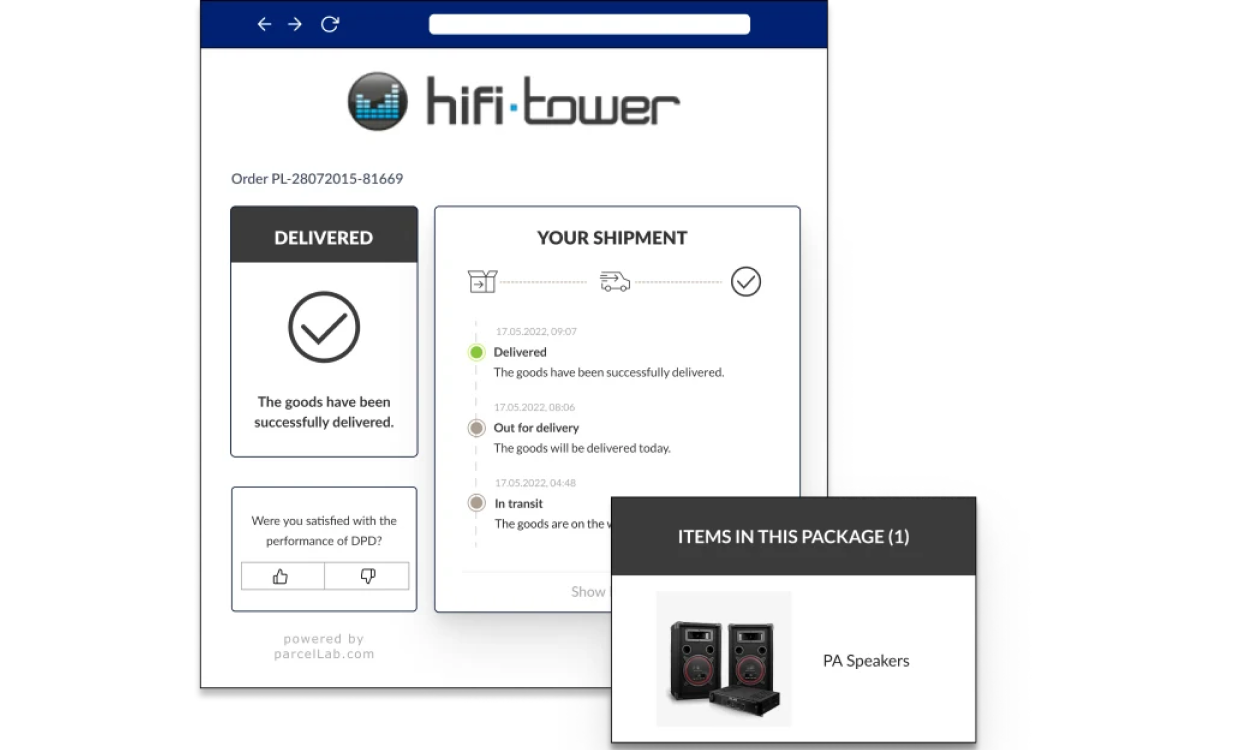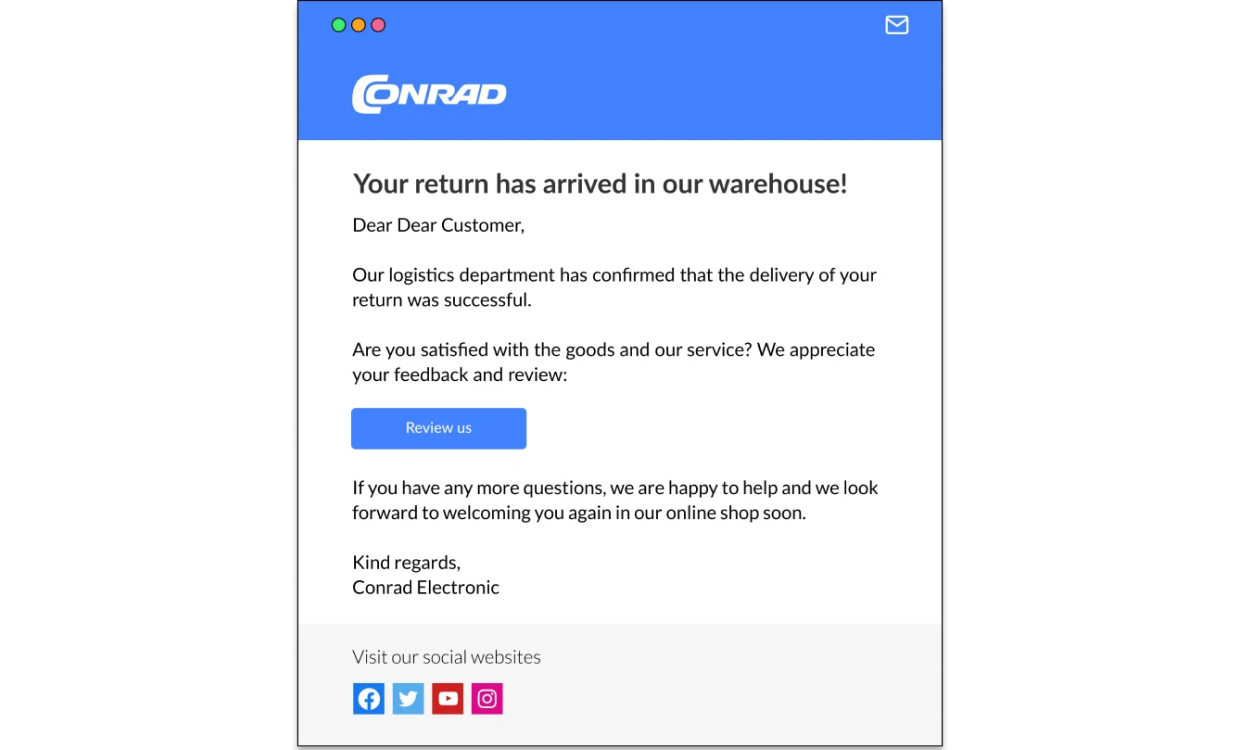Why parcelLab?
Discover why parcelLab is the go-to post-purchase partner for top retailers across the globe

As an ecommerce business, you know that every penny counts—especially in today’s economic landscape. Margins are shrinking, competition is fierce, and shoppers are savvier than ever.
But it’s not all doom and gloom. No matter what your financial situation is, there are many things that you can do to implement smart spending strategies and reduce business expenses without sacrificing quality.
The question is: how do you do it?
In this article, we’ll cover everything you need to know about cost reduction in ecommerce. From negotiating better terms with suppliers to automating tasks, you’ll discover the top ecommerce cost-cutting practices that can help you save money and boost your profits.
| Kostensparende Maßnahme | Beschreibung |
|---|---|
| Verbessern Sie Ihr Verständnis Ihrer finanziellen Lage | Ermitteln Sie die Geldströme und die Aufteilung Ihres Budgets. Identifizieren Sie anschließend die umsatz- und gewinnbringenden Unternehmensbereiche. |
| Optimieren Sie Ihre Abläufe durch Automatisierung, um Betriebskosten effektiv zu reduzieren | Automatisieren Sie aufwendige und zeitaufwändige Vorgänge in Bereichen wie Datenerfassung, Kundenkommunikation, Auftragsbearbeitung, Marketing, Lieferantenmanagement, Rückerstattungsabwicklung und Produktentwicklung. |
| Führen Sie Verhandlungen mit Ihren Zulieferern, um die Kosten für Lagerhaltung zu minimieren | Streben Sie Mengenrabatte bei Großeinkäufen an und bevorzugen Sie Zulieferer in der Nähe Ihrer Lagerstätten. Ziehen Sie zudem Just-in-Time-Lieferungen und Konsignationslagerung in Erwägung. |
| Optimieren Sie Ihre Ausgaben im Marketing für maximale Effizienz | Statt Marketingbudgets pauschal zu reduzieren, analysieren Sie die Ausgaben und allokieren Sie diese neu in die Kanäle mit dem höchsten Return on Investment. |
| Reduzieren Sie Rücksendungen und Erstattungen auf ein Minimum | Minimieren Sie Retouren durch genaue Produktbilder und -beschreibungen. Hilfreich ist auch die Bereitstellung von Größentabellen und anderen Ressourcen. Perfektionieren Sie den Versandprozess und sorgen Sie für eine sichere Verpackung, um Beschädigungen zu verhindern. |
| Etablieren Sie einen leistungsfähigen Kundenservice | Automatisieren Sie Kundendialoge, einschließlich Auftragsbestätigungen und Versandmitteilungen, um Anfragen zum Verbleib von Bestellungen (WISMO) zu vermindern. Dies hält Ihre Kunden informiert und entlastet Ihr Team von Anfragen zu Basisinformationen der Bestellung. |
| Legen Sie den Fokus auf die Förderung von Mitarbeiterloyalität | Eine hohe Mitarbeiterumschlagsrate ist kostspielig. Neben den unmittelbaren Ausgaben für die Rekrutierung und Einarbeitung neuer Teammitglieder entgehen Ihnen auch potenzielle Produktivitätssteigerungen. |
| Senken Sie Ihre Versandkosten | Reduzieren Sie die Versandkosten durch Neuverhandlung von Verträgen mit Versandunternehmen oder Kooperationen mit regionalen Kurierdiensten. Der Einsatz von Versandsoftware und Dienstleistungen Dritter (3PL) kann ebenso zur effektiven Verwaltung Ihrer Versandkosten beitragen. |
Ecommerce cost reduction isn’t about cutting expenses across the board. Rather, it’s about spending smart and maximizing value.
As such, the first step to lowering your expenses is understanding and managing your finances. These two actions will help kick off your financial analysis:
Doing these things will help you determine the places where you’re overspending. But more importantly, it’ll shed light on the parts of your business that bring in revenue so you can invest more strategically. This also ensures that you don’t cut your budget in areas that are crucial for company growth and customer satisfaction.
For example, if you find that your social media marketing campaigns are generating a lot of leads and sales, you could invest more money in those campaigns rather than cutting your budget just for the sake of doing so.
On the flip side, you may discover that certain marketing channels are not generating a return on investment, which means you can reduce your spending on those channels.
Let’s say you’re running traditional ad campaigns but aren’t seeing a lot of conversions; in this instance, you could decide to reduce your budget for those channels.
Whatever the case, the only way to uncover these insights is to run the numbers in your business. Take a deep dive into your financial analytics, regularly review your expenditures, and make data-driven decisions to optimize your spending.
Overly manual and inefficient processes are costing you money in the form of lost productivity. Research shows that employees spend about 40% of their time on manual or repetitive tasks.
This is why it’s crucial to automate tedious and time-consuming processes in your business.
Your automation strategy will depend on your operations, but some of the critical areas to look into are:
Data and information transfer: The right software integrations enable you to automate data between different systems, such as your customer relationship management (CRM) system and accounting software.
Customer communications: If you haven’t done so yet, put specific customer communication tasks on auto-pilot. This can include post-purchase communications like order confirmation messages and tracking information. Offering self-serve resources can also help you reduce costs while improving customer satisfaction.
parcelLab helps you do this through configurable communications that keep customers informed. Create branded order confirmation and shipping notifications so customers are always in the loop at every stage of their post-purchase journey.
Order processing and fulfillment: The right ecommerce tech stack (including inventory, warehouse, and order management) can streamline how you process and fulfill orders. A good warehouse management system (WMS), for example, can automatically track inventory levels, generate picking lists, and direct warehouse workers to the correct products.
Marketing campaign scheduling: Use a solid marketing automation platform to create and schedule emails, social media posts, and other marketing campaigns. This can free up your team’s time from having to create and schedule campaigns manually, and it can also help to ensure that campaigns are sent out on time and to the right people.
Supplier and vendor communications: Consider using electronic data interchange (EDI) for your vendor comms and documents. EDI allows you to exchange documents electronically, such as purchase orders, invoices, and shipping confirmations.
Returns and refunds processing: Automate refunds and returns using a returns management system (RMS)—ideally one that supports self-service returners.
parcelLab’s returns management features enable you to do just that. Our solution allows you to create a branded returns portal that empowers customers to select items for returns, choose a convenient returns method, and get a label or QR code with an embedded, personalized returns experience.
Product development: Automate tasks such as collecting and analyzing customer feedback, managing product development workflows, and testing new products. This can help you to bring new products to market faster and more efficiently.
Inventory is usually a significant (and highly necessary) expense for online merchants. As such, negotiating with your suppliers to reduce inventory costs is a smart move.
Consider the following tactics.
Get discounts for bulk purchases. One of the ways you can do this is to strengthen your relationships with suppliers and see if you can negotiate better terms. Suppose you regularly purchase large amounts of merchandise from a particular vendor. In this instance, you could explore bulk purchase discounts.
Find vendors closer to your headquarters or warehouses. Another idea is to look into local suppliers to reduce shipping costs.
See if you can work using JIT inventory. Additionally, you could consider working with a supplier that offers just-in-time (JIT) inventory management. This would allow you to receive inventory exactly when you need it, reducing your storage costs and the risk of obsolescence.
Try consignment inventory. Consignment agreements can help lower your inventory costs by allowing you to stock and sell products without purchasing them upfront. With this arrangement, you only pay the supplier for items when they actually sell, reducing the financial risk of holding unsold stock.
Whatever you decide to do, here are additional tips for negotiating with suppliers to reduce inventory costs:
Marketing brings in more business, which is why the key term in this tip is to optimize (and not reduce) your marketing budget. Rather than mindlessly cutting your advertising and marketing spend, analyze and reallocate funds towards the most effective channels that yield the highest return on investment (ROI).
Put more funds towards the marketing channels that are most effective for your business. If you find that your social media marketing campaigns are generating a lot of leads and sales, you may want to invest more money in those campaigns. Alternatively, if your email marketing campaigns are not as effective, you may want to reduce your budget for those campaigns.
Throughout all of this, be sure to track the results of your marketing campaigns to see what’s working and what isn’t. This will help you allocate your budget even more effectively.
All that being said, it’s a smart idea to allocate at least some of your budget for experimentation. This may feel counterintuitive, especially when you’re in ecommerce cost-cutting mode; however, testing new strategies and channels can unveil hidden opportunities or emerging trends. You can stay ahead of the curve, potentially discovering cost-effective tactics before your competitors do.
And remember: you don’t need to experiment with a lot of new marketing tactics at once. Start by experimenting with one or two and see how they perform.
Research by the National Retail Federation (NRF) found that “for every $1 billion in sales, the average retailer incurs $165 million in merchandise returns.”
You’re losing money with every return, so it’s essential to avoid them at all costs. Start by understanding why returns happen in the first place. Are your products not meeting your customers’ expectations? Is it a size issue? Are orders not arriving in time? Figure out the top reasons for returns in your business and work to resolve them.
Depending on the situation, minimizing returns could entail the following:
Ensure your product photos and descriptions are accurate. Misleading imagery or information can result in unsatisfied customers. Ensuring accuracy prevents purchase regrets and reduces the likelihood of returns.
Give customers size guides and fitting tools. This reduces the chances of customers ordering incorrect sizes, which means they’re less likely to send products back.
Provide product guides and resources to shoppers. When customers fully understand how to use or assemble a product, they are less likely to return it out of frustration or confusion.
Secure your packages to avoid damage. Sturdy packaging and proper cushioning can prevent products from getting damaged during transit. Orders arrive safely and in good condition, reducing the chances that customers will return them.
Explore repurchase incentives. If a customer is returning an item via your self-service portal, make sure they are provided with exchange options. For example, a customer who is returning a piece of clothing because it was the wrong size or color would be prompted with other sizing and colors that your brand has in stock. This missed revenue opportunity becomes a chance to recover the sale and boost customer loyalty.
Collect customer feedback to improve your products and services. Gathering customer input can shed light on product issues so you can make adjustments and continuously improve.
Prevent return fraud. According to the NRF, “for every $100 in returned merchandise accepted, retailers lose $10.40 to return fraud.” That’s over 10% of revenue going to fraudsters. Prevent this by beefing up your security practices around returns. Train your staff to properly verify returns and tighten up your processes to mitigate fraudsters from taking advantage of your systems.
Streamlining your customer service practices doesn’t mean cutting your support team or delivering lackluster customer support. Instead, it’s about empowering your customers with the information and resources they need so they can resolve queries independently, get their questions answered, and ultimately reduce the demand on your customer support staff.
Here’s how:
Automate customer communications like order confirmations and shipping notifications to reduce WISMO inquiries. This practice not only keeps your customers informed, but also cuts down on the number of inquiries your team receives about basic order details.
One example of a brand that’s doing this well is Hugo Boss. The company integrated parcelLab into its existing infrastructure to send branded order emails and delivery updates. Doing so has helped the brand personalize the customer experience while decreasing WISMO requests in the process.

Create an order portal that lets shoppers track the status and location of their orders. Aside from decreasing the number of status-related questions directed at your support team, a branded order tracking portal promotes a consistent branding experience.
Case in point: the online electronics store, BBG. Prior to parcelLab, BBG dealt with a high volume of post-purchase inquiries, which created heavy workloads for their support team. To address this, BBG implemented parcelLab to offer real-time ecommerce tracking updates. As part of this process, the company implemented a live order status page on its website to keep customers informed.
With parcelLab’s help, BBG was able to reduce customer service requests by 24%, freeing up the team’s time to focus on high-level tasks.
“We recognize that only satisfied customers return and become loyal customers. The delivery process certainly has an extensive influence on customer service inquiries,” remarks Sebastian Leiß, Product Owner at BBG.

Set up FAQ pages and a knowledge base. That way, customers can search and find the answers they need and free up your team’s time to focus on more complex customer issues.
Use chatbots to answer common questions or route queries to the right support team. Chatbots can handle inquiries round-the-clock, ensuring immediate responses while reducing inquiries that need to be handled by human agents.
Set up self-service returns. While you must do your best to prevent returns (see above), these things are part of the territory. And when returns occur, the best thing is to make the process as easy as possible for your customers.
A self-service returns portal lets you do just that. By allowing shoppers to initiate returns on their end, you not only enhance their shopping experience but you also reduce “Where is My Return” (WISMR) inquiries.
Conrad Electronics is an excellent example of a business that offers self-service returns. The company uses parcelLab to power its returns portal and streamline the experience for both Conrad’s team and customers.
Here’s how Conrad’s process works: customers register their returns online and receive a printable label or QR code. That way, they’re able to track the entire returns—including transit.
“With the online returns portal we now have a digital and uncomplicated solution with which we know as soon as the parcel is at the counter or with the delivery agent what is coming back and when,” explains Silvio Heider, Business Expert Project & Digital Process Management at Conad.
“We benefit from this, especially in terms of staff planning and we are also faster thanks to automated handling processes.”

According to the Society for Human Resource Management (SHRM), it costs businesses an average of $4,683 to hire new employees, and this figure is much higher when hiring executives (an average of $28,329 per hire).
So, if you’re dealing with high staff turnover, you’re losing a significant amount of money. In addition to the direct costs of hiring and training new employees, you also lose productivity and morale when employees leave. Plus, it’s difficult to maintain customer relationships and a positive brand image when there is a lot of turnover.
The best way to address this is to improve employee retention. When employees remain with your company for the long haul, you save on the costs of training new recruits. Not to mention, experienced employees typically work faster and more efficiently, ensuring you maintain high productivity and avoid unnecessary financial drain.
Here are tips to help you retain your best employees.
Shipping is a significant expense for ecommerce merchants. The Wall Street Journal cites research from Shippo, which found that “47% of merchants in a recent survey said they spend more than 10% of an order’s total value on shipping.” The study also found that 41% of merchants see higher shipping costs as one of their biggest business challenges.
All this to say that effectively managing your shipping expenses will have a material impact on your bottom line.
Optimizing shipping costs helps you widen your profit margins, especially if you offer free shipping.
On the other hand, if you pass on shipping costs to your customers, lowering them can improve conversion rates, as shoppers are less likely to abandon their carts if they see transparent and affordable shipping rates.
So, how can you lower your shipping costs? Try the following.
Ecommerce cost cutting can improve your bottom line—as long as it’s done strategically. Before cutting your budget, you need to determine the specific areas in which to reduce costs and which parts of your business deserve more financial love.
This thoughtful approach enables you to implement ecommerce cost-reduction strategies without compromising quality, output, and revenue.
And if you need help with streamlining your operations and reducing costs at the post-purchase stage, parcelLab has got you covered.
parcelLab is the only truly global enterprise post-purchase software provider, enabling you to increase top-line revenue, decrease operational costs, and optimize customer experience.
Book a demo of our award-winning post-purchase platform and discover how parcelLab can help your business thrive amidst any economic environment.